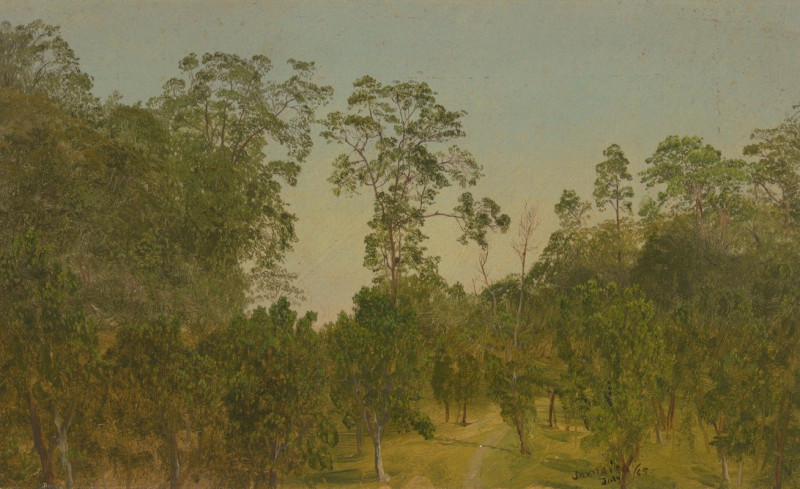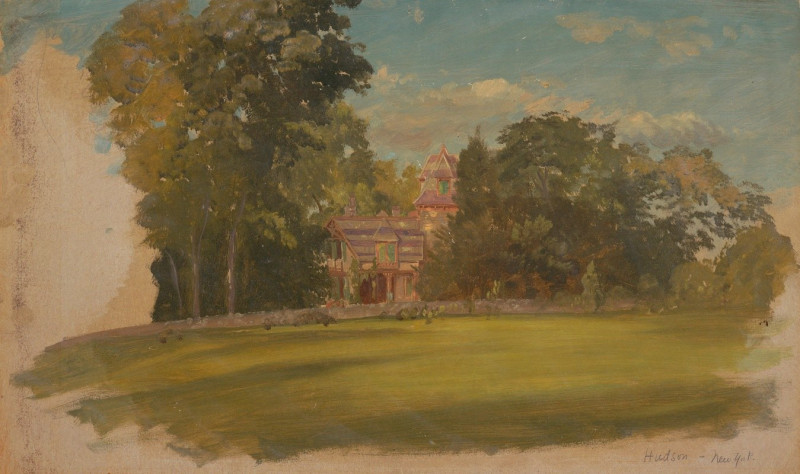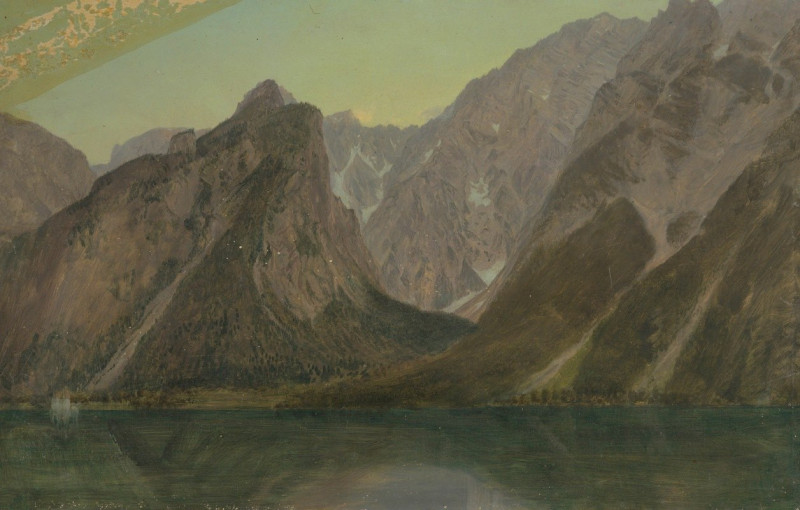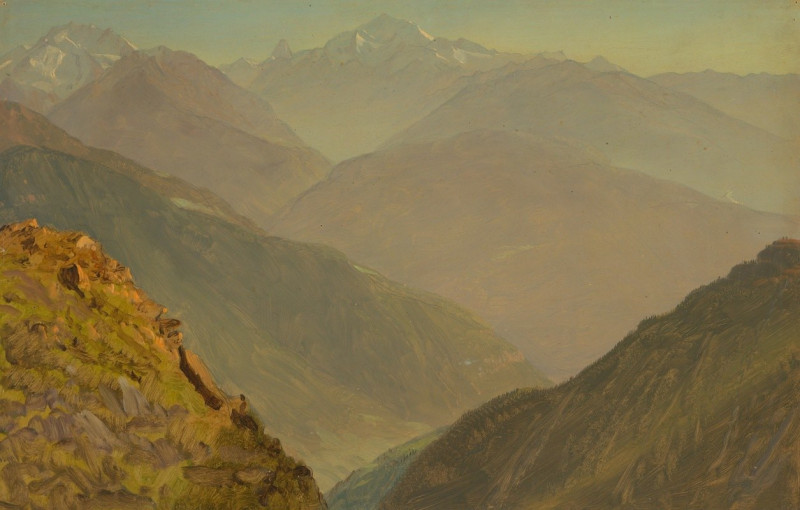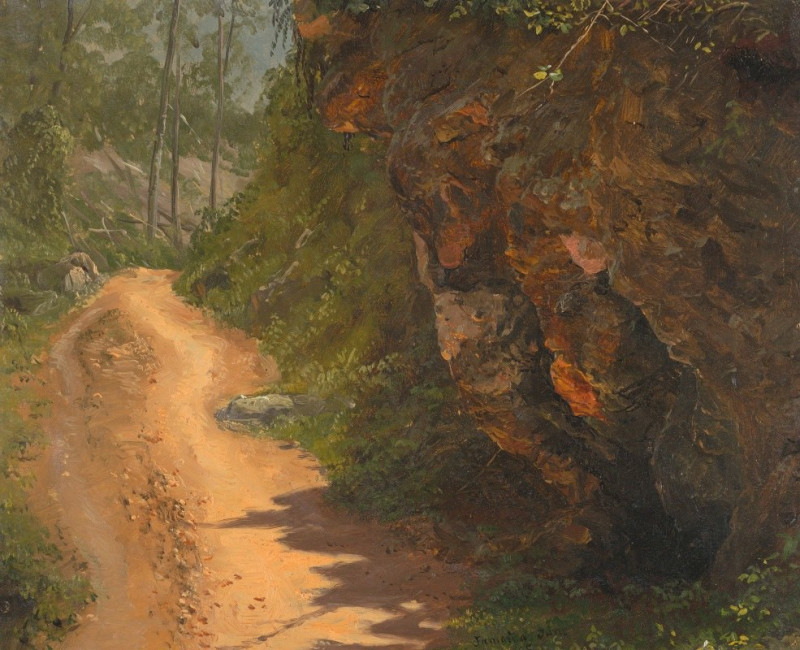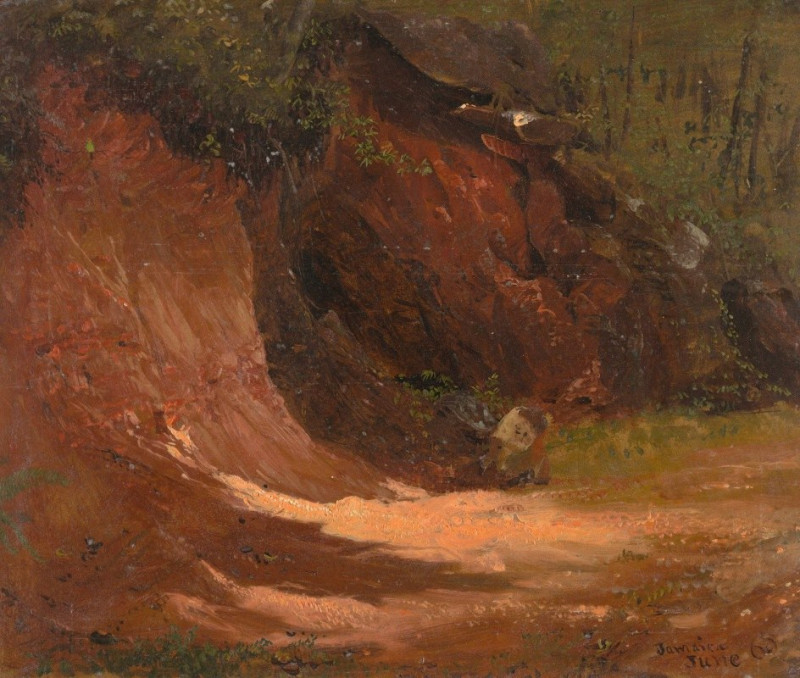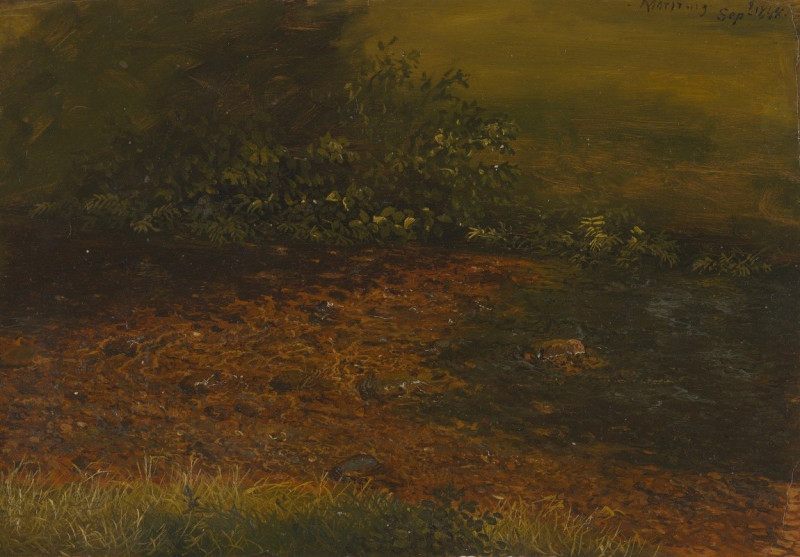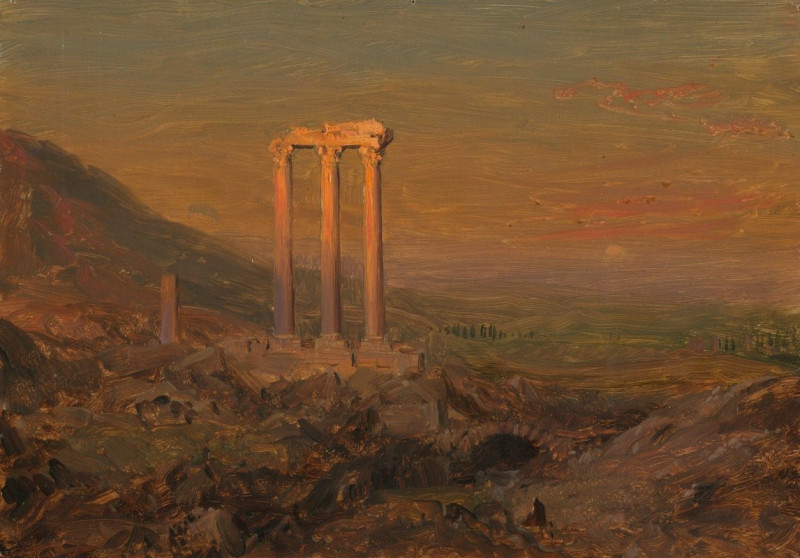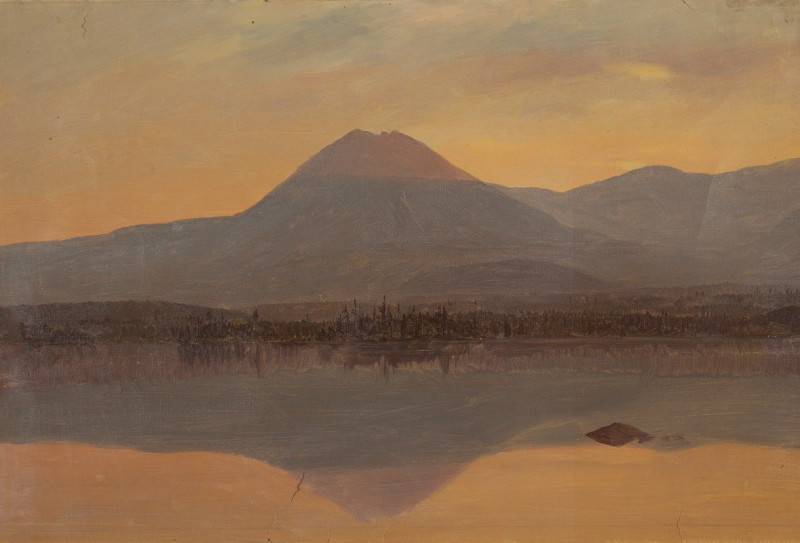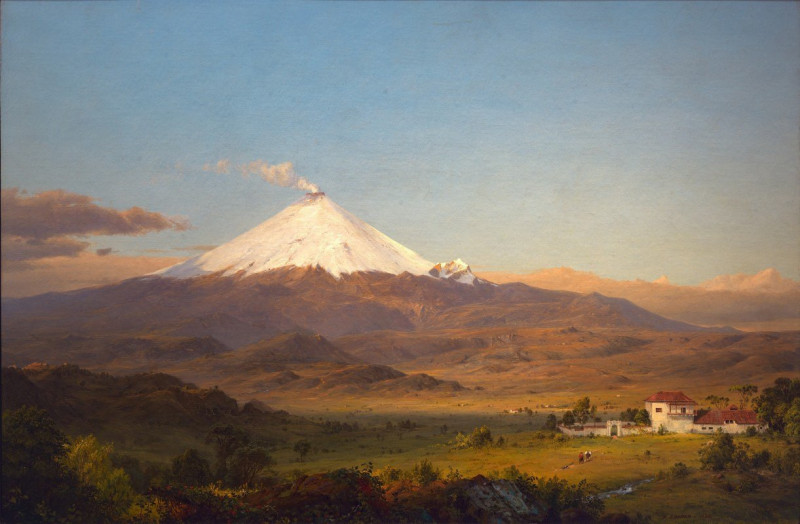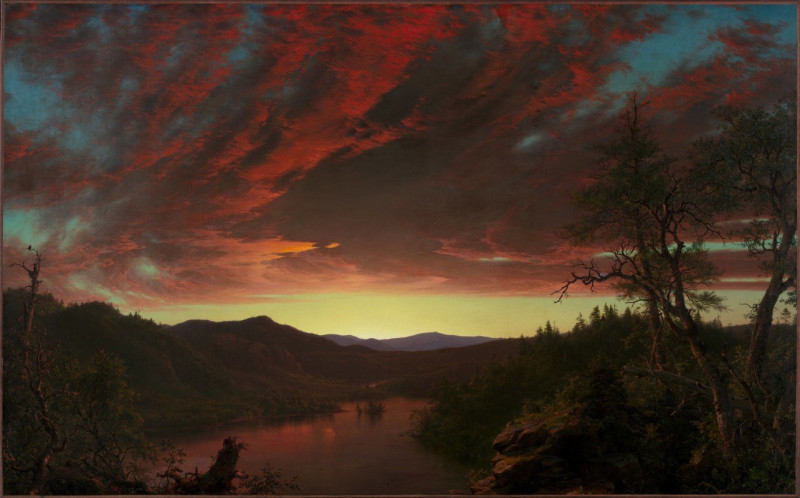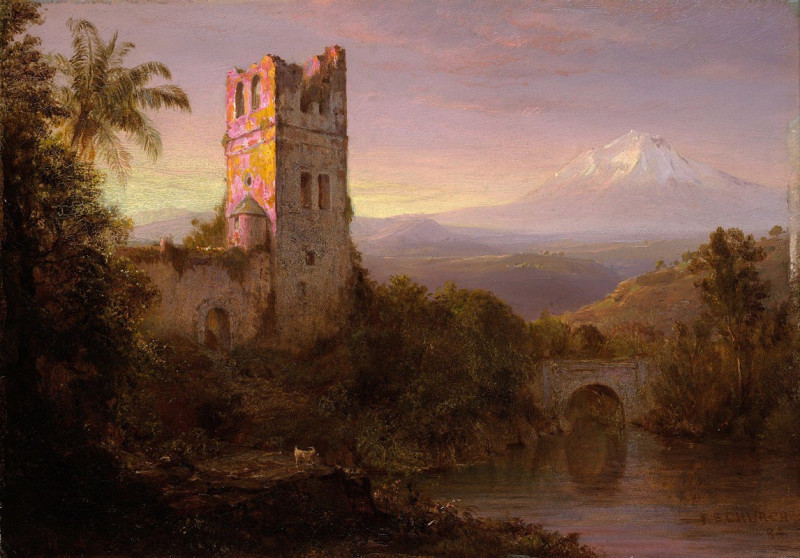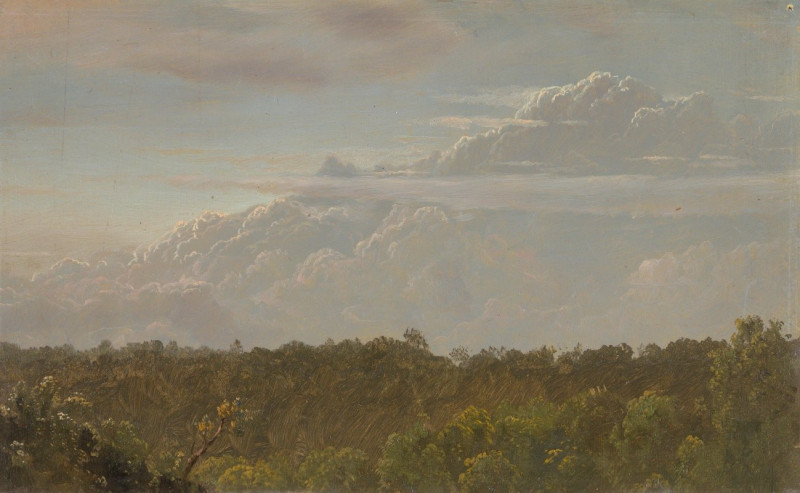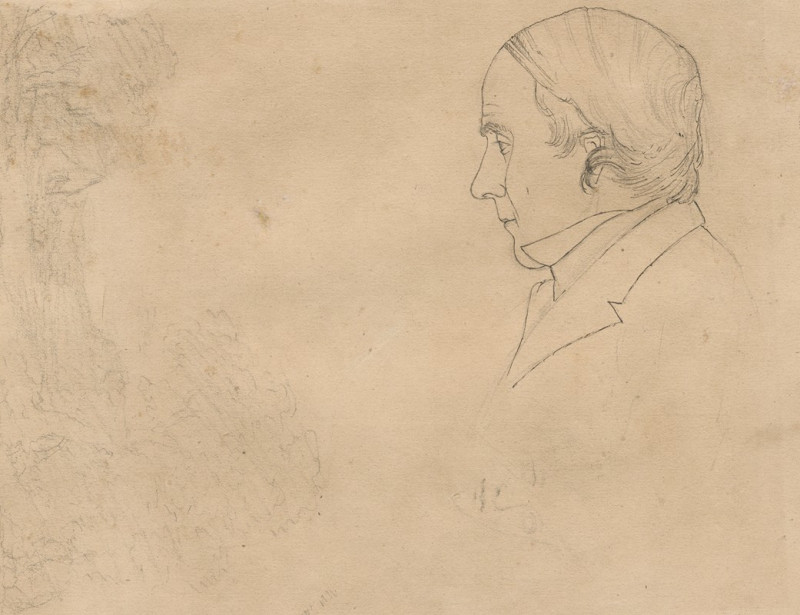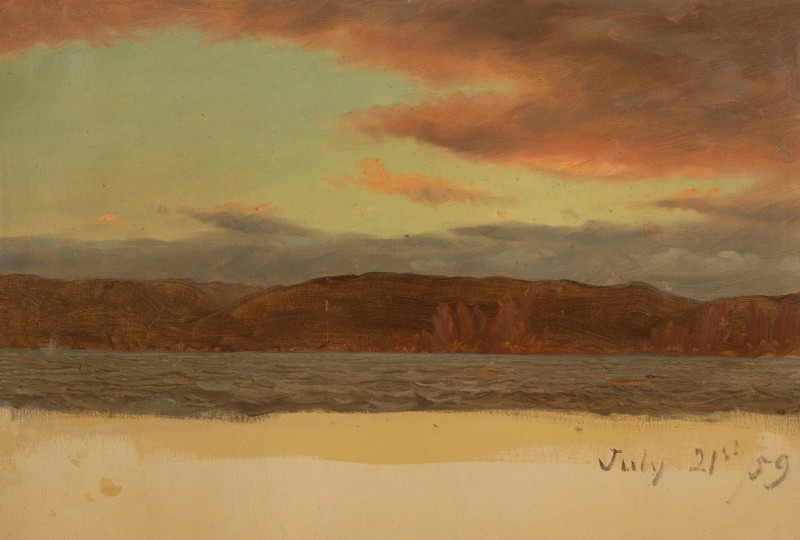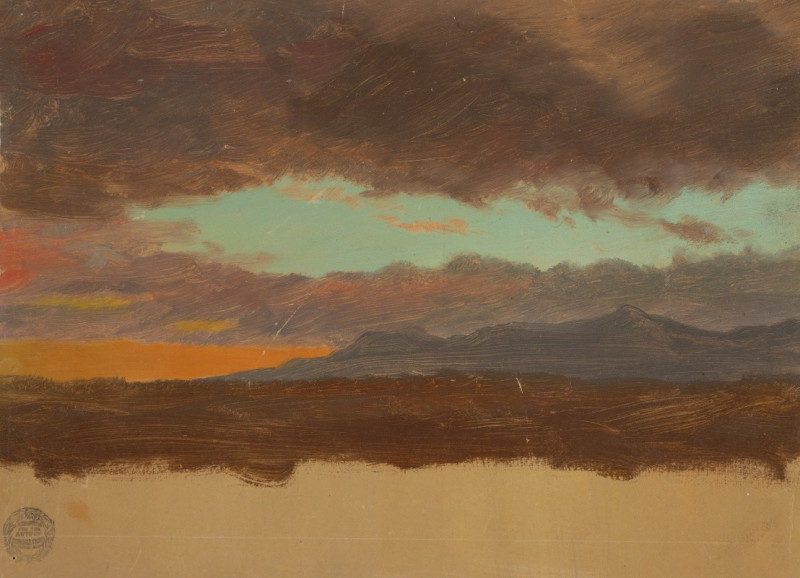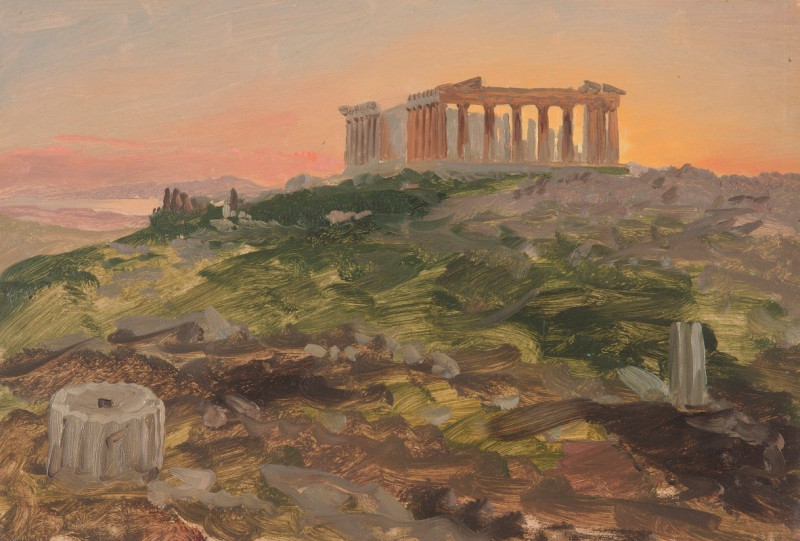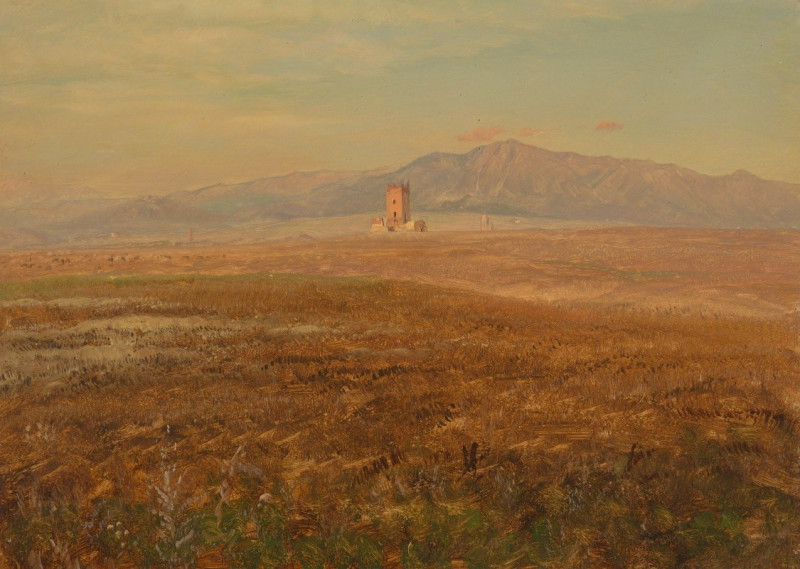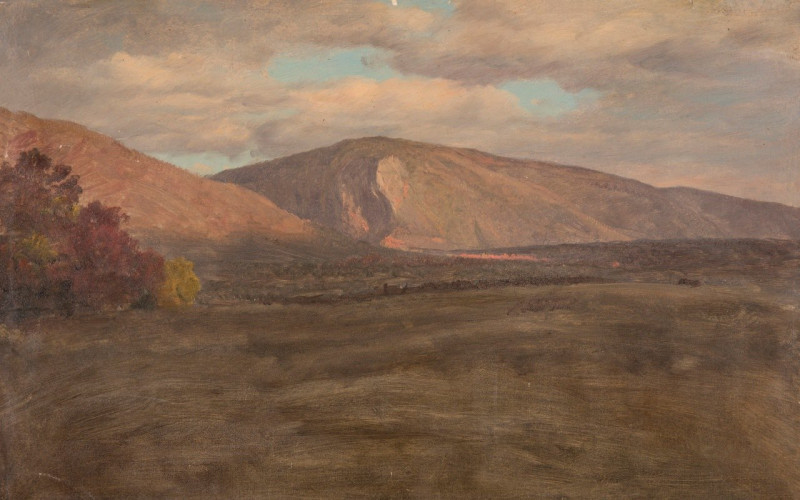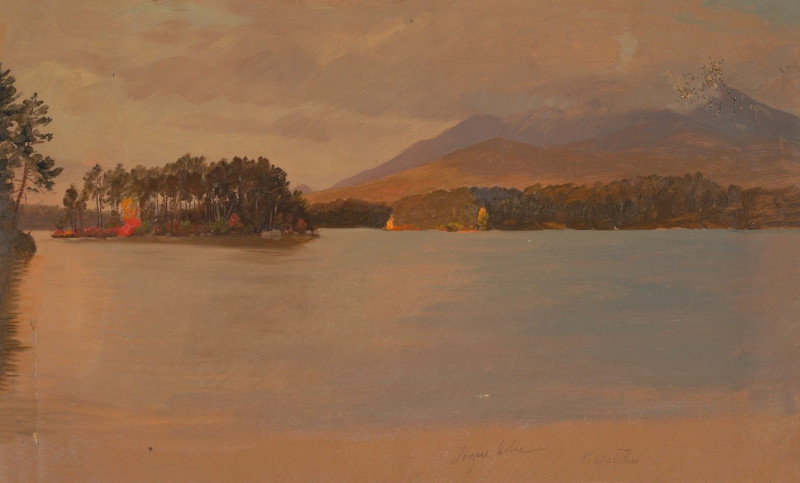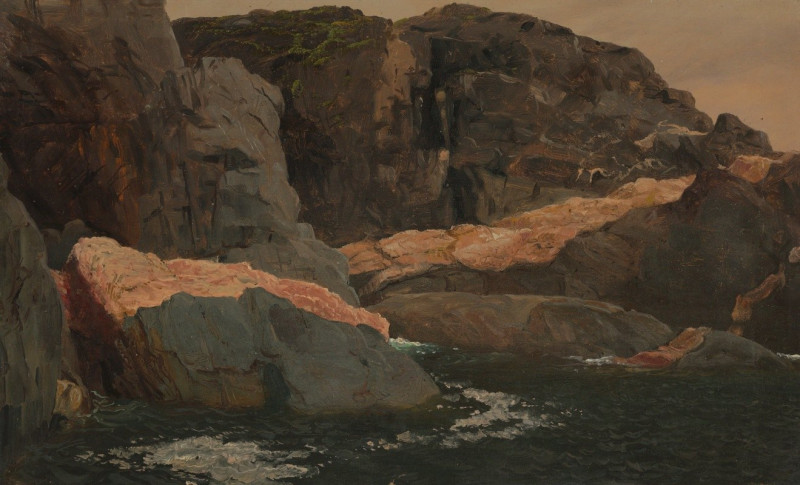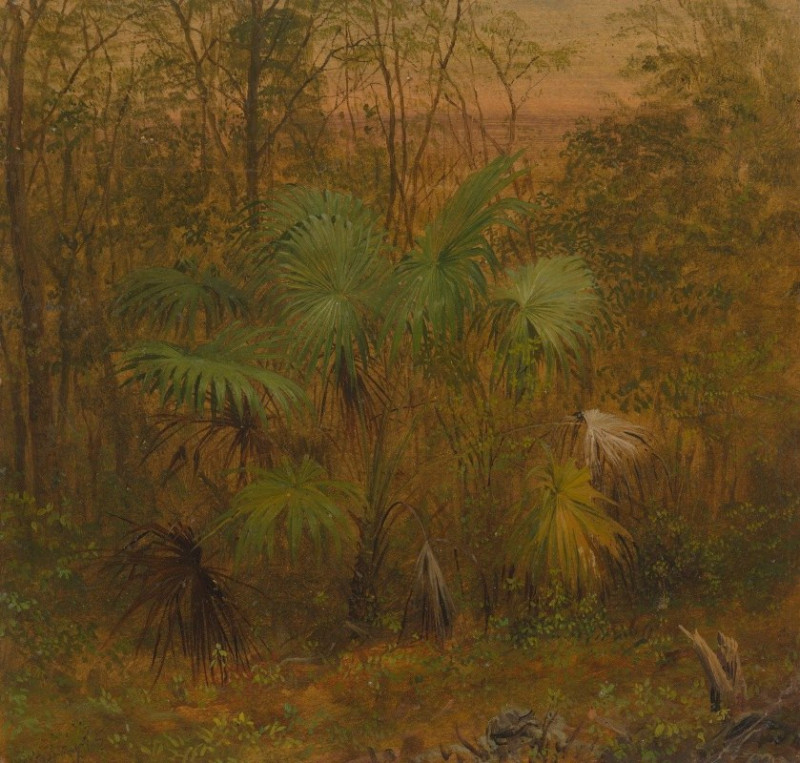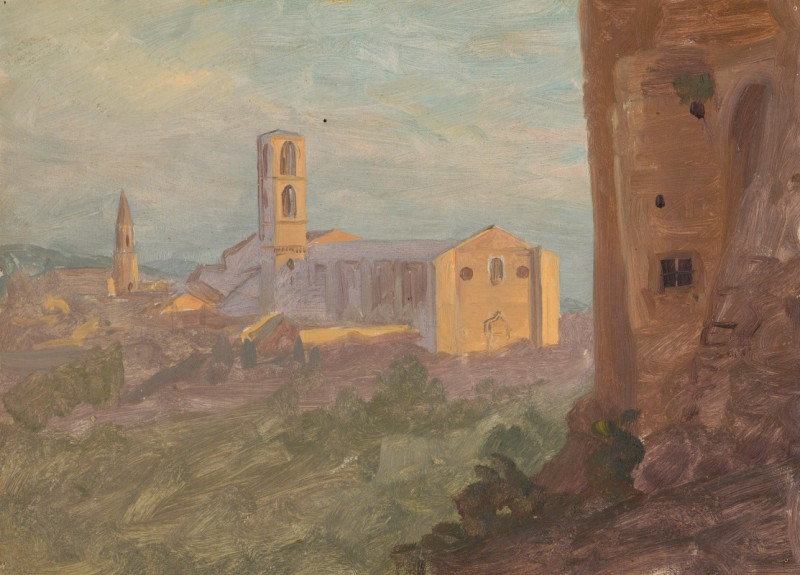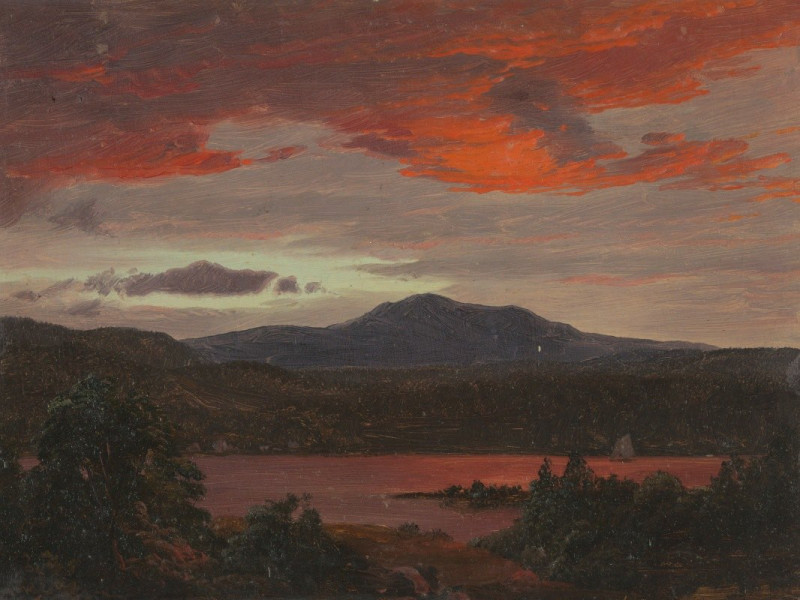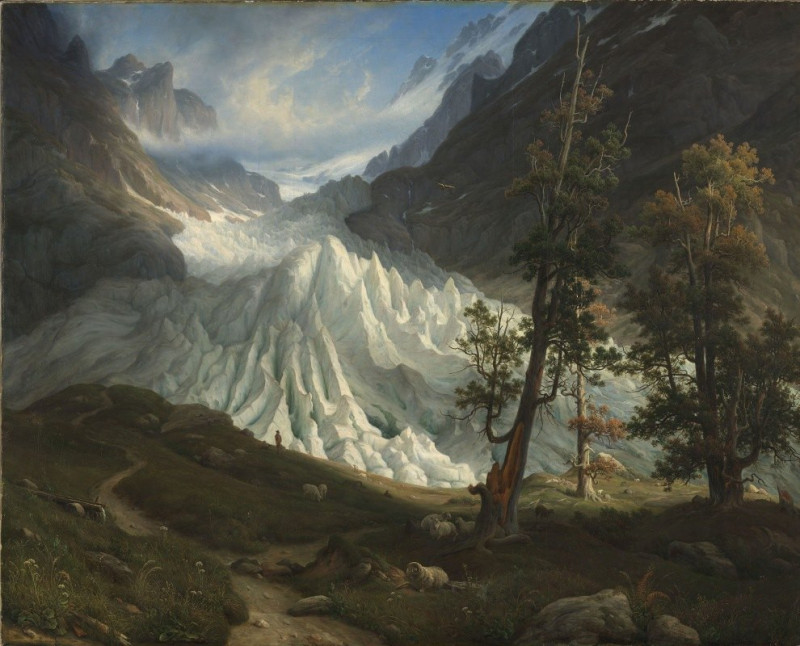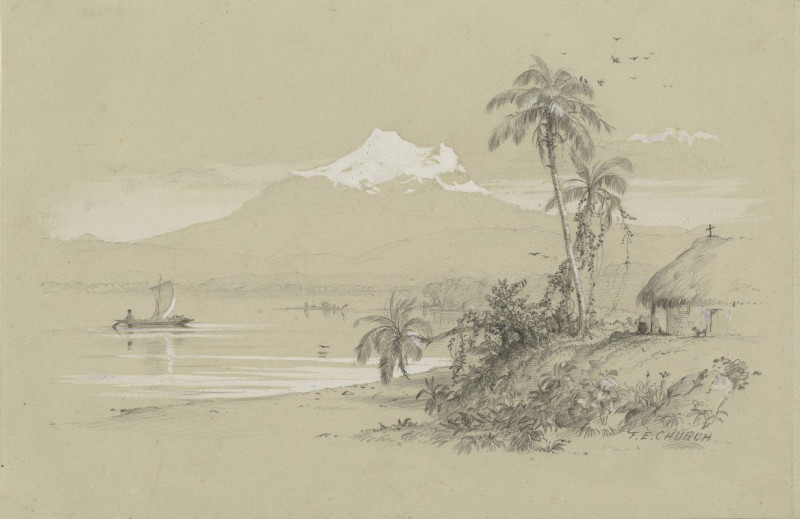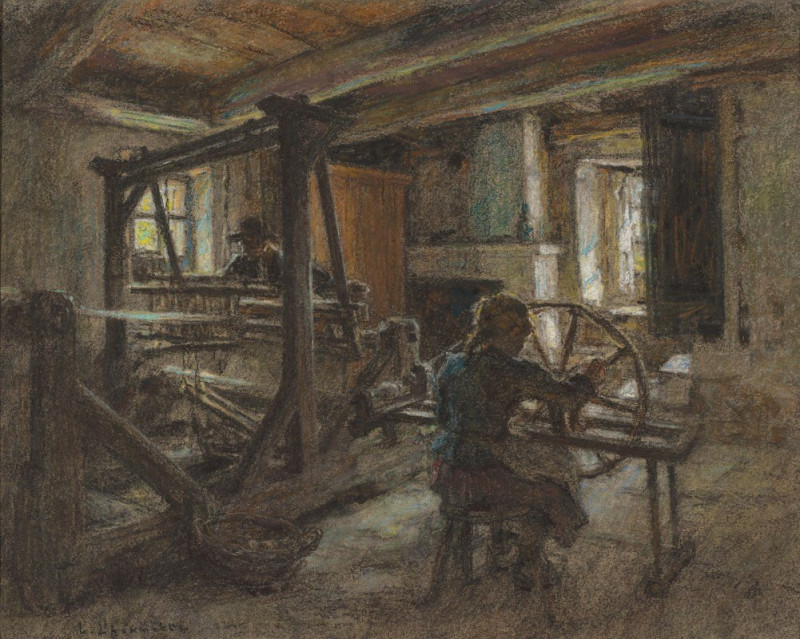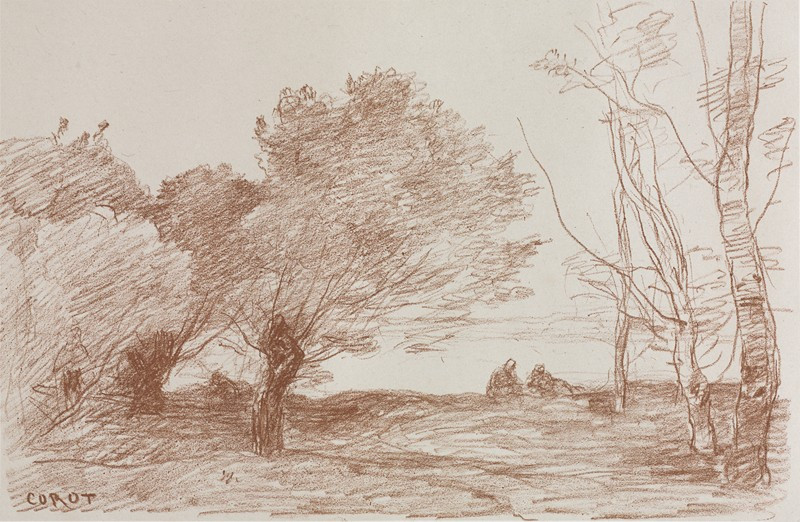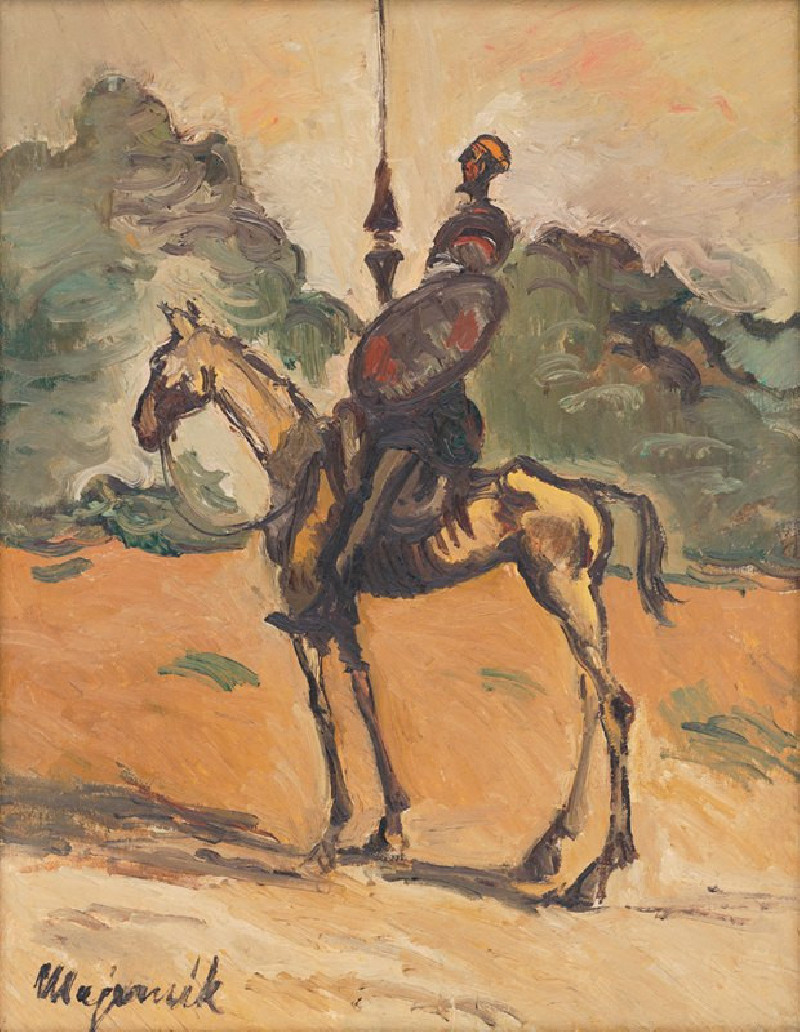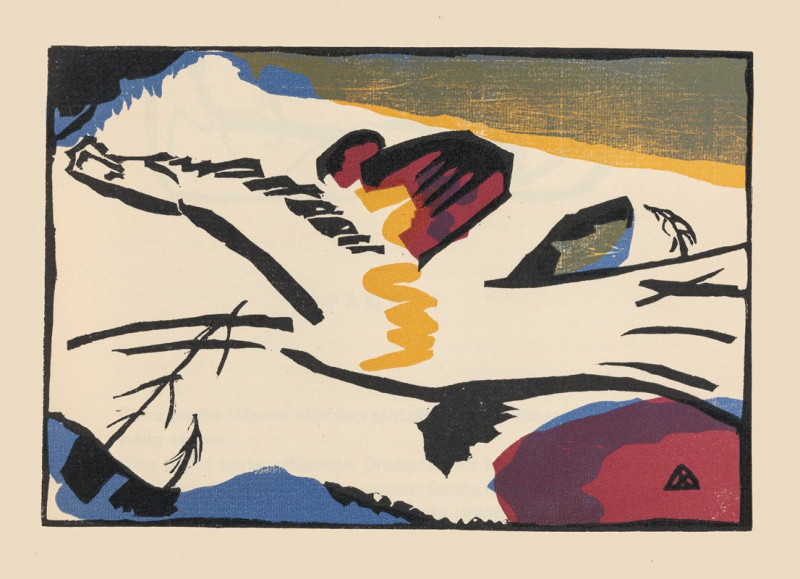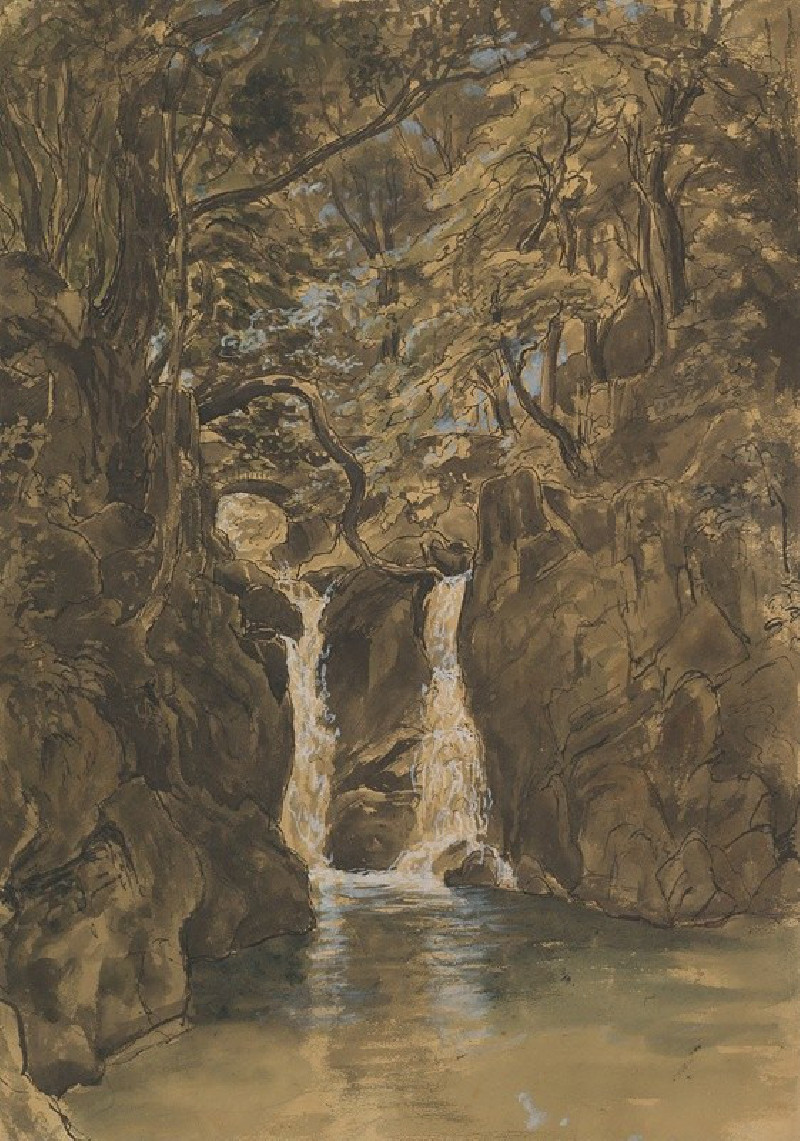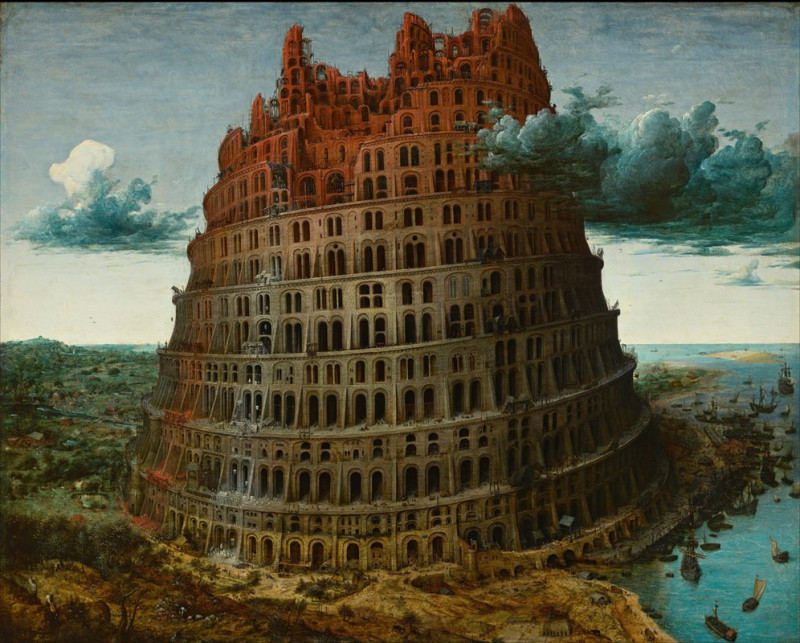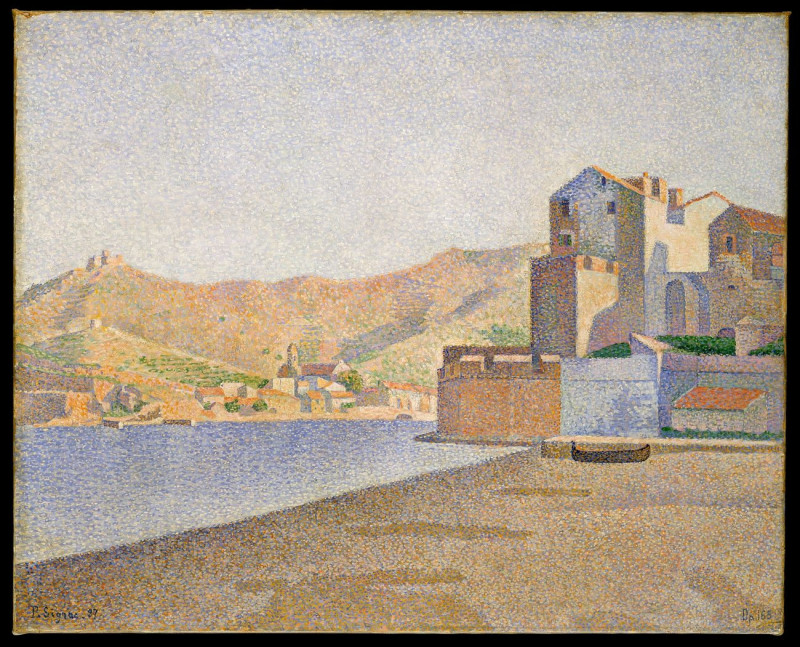Landscapes (July 1865)
Technique: Giclée quality print
Recommended by our customers
More about this artwork
Frederic Edwin Church’s painting titled "Landscapes (July 1865)" offers an enchanting view that captures the serene essence of the mid-19th century American countryside. This piece particularly highlights Church’s detailed approach to naturalism and his ability to evoke an emotive response through his work.The painting portrays a lush, dense forest, filled with a rich variety of mature trees. The scene is divided by a subtle, winding path that softly guides the viewer’s eye through the thicket of greens and browns. The foliage, depicted with meticulous attention to texture, shadow, and light, resembles a natural canopy that vibrates with life, yet instills a sense of tranquility.In the center and right, taller trees stand with commanding presence, their foliage reaching into a soft, pale sky, suggesting either the early hours of dawn or the gentle decline of dusk. This is not just a representation of a simple woodland; it’s an invitation to wander, to explore the layers and nuances of the growth, and to ponder the quiet stability the landscape provides."Landscapes (July 1865)" embodies the profound respect and fascination Frederic Edwin Church held for the natural world, beautifully rendered through the lens of his artistic genius.
Delivery
Returns
Frederic Edwin Church (May 4, 1826 – April 7, 1900) was an American landscape painter born in Hartford, Connecticut. He was a central figure in the Hudson River School of American landscape painters, best known for painting large landscapes, often depicting mountains, waterfalls, and sunsets. Church's paintings put an emphasis on realistic detail, dramatic light, and panoramic views. He debuted some of his major works in single-painting exhibitions to a paying and often enthralled audience in New York City. In his prime, he was one of the most famous painters in the United States.

